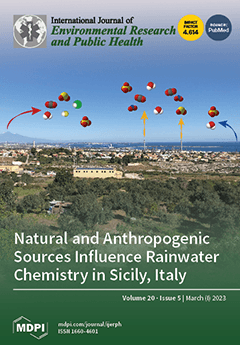Open AccessPerspective
Twelve Tips for Inclusive Practice in Healthcare Settings
by
Brahmaputra Marjadi, Joanne Flavel, Kirsten Baker, Kristen Glenister, Melissa Morns, Mel Triantafyllou, Penelope Strauss, Brittany Wolff, Alexandra Marie Procter, Zelalem Mengesha, Scott Walsberger, Xiaoxi Qiao and Paul A. Gardiner
Cited by 26 | Viewed by 22205
Abstract
This paper outlines practical tips for inclusive healthcare practice and service delivery, covering diversity aspects and intersectionality. A team with wide-ranging lived experiences from a national public health association’s diversity, equity, and inclusion group compiled the tips, which were reiteratively discussed and refined.
[...] Read more.
This paper outlines practical tips for inclusive healthcare practice and service delivery, covering diversity aspects and intersectionality. A team with wide-ranging lived experiences from a national public health association’s diversity, equity, and inclusion group compiled the tips, which were reiteratively discussed and refined. The final twelve tips were selected for practical and broad applicability. The twelve chosen tips are: (a) beware of assumptions and stereotypes, (b) replace labels with appropriate terminology, (c) use inclusive language, (d) ensure inclusivity in physical space, (e) use inclusive signage, (f) ensure appropriate communication methods, (g) adopt a strength-based approach, (h) ensure inclusivity in research, (i) expand the scope of inclusive healthcare delivery, (j) advocate for inclusivity, (k) self-educate on diversity in all its forms, and (l) build individual and institutional commitments. The twelve tips are applicable across many aspects of diversity, providing a practical guide for all healthcare workers (HCWs) and students to improve practices. These tips guide healthcare facilities and HCWs in improving patient-centered care, especially for those who are often overlooked in mainstream service provision.
Full article
►▼
Show Figures





